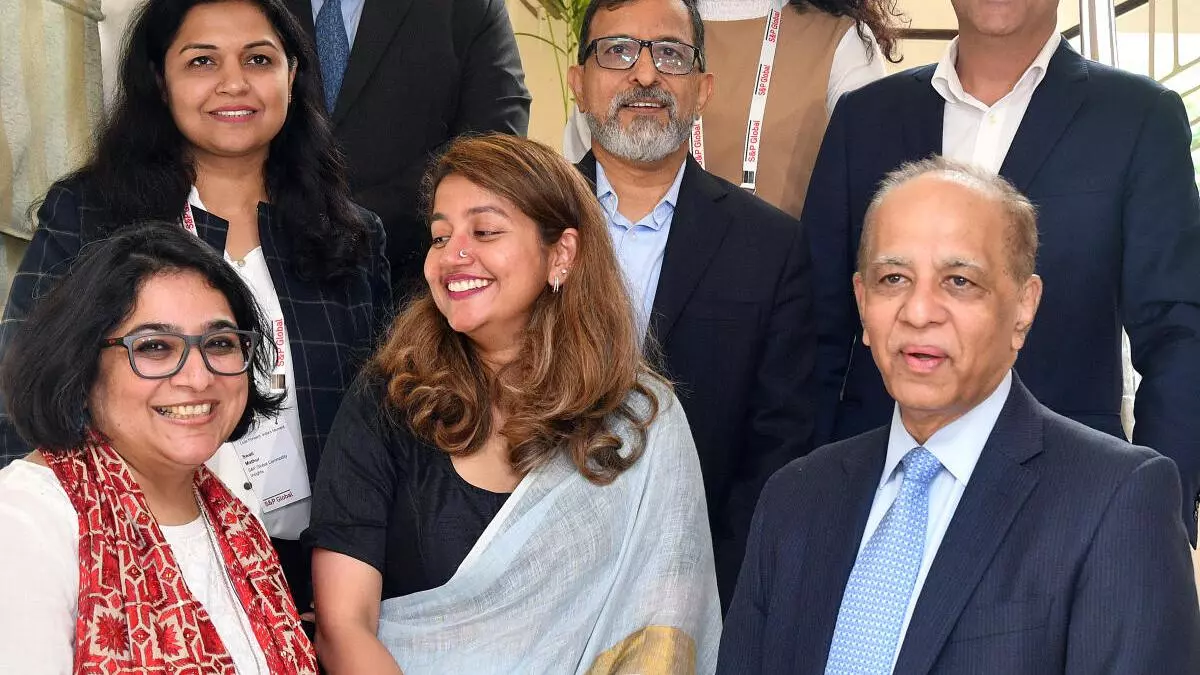Capital investment push to help India double GDP in 8 years: S&P Global
S&P Global, a NYSE-listed data, research and analytics firms, sees India growing at an average 6.7 per cent for the next eight years, catapulting GDP to $6.7 trillion in fiscal 2030-31 from $3.4 trillion in 2022-23. It also sees per capita GDP rising to about $4,500.
Capital accumulation will be the dominant driver of Indian growth, said Dharmakirti Joshi, Chief Economist, CRISIL, a S&P Global company, adding that capital is expected to contribute 53 per cent of India’s 6.7 per cent average GDP growth through the end of the decade.
He was speaking at the launch of S&P Global’s first-ever thought leadership journal, Look forward: India’s moment, focusing on the opportunities, risks, and potential for India to strengthen its claim to be a global superpower in the decade to come.
‘Defining opportunity’
While the world is in the midst of an unprecedented period of transition and uncertainty, India faces a defining opportunity to capitalise on this moment, according to S&P Global’s latest ‘Look Forward’ research report.
Joshi said that increase in productivity will generate 30 per cent of GDP growth, and labour, the other factor of production, would contribute 17 per cent.
Noting that it was government-led capital push in recent years that had been fuelling economic growth, Joshi said that private sector is expected to gradually increase investments given their healthy balance-sheets. Directionally, the needle is moving towards revival of private investment. It has not happened fully as yet, he added.
“Now the government is pushing investment. The kind of push the Central government has given is not sustainable. Slowly, public investment will kind of peter out because they have to be mindful of fiscal-deficit target. In the uncertain environment and just before elections, private-sector mood is not aggressive on investments. It’s happening in parts. But it is not the animal spirits revival of private investments, which we saw in 2002-08 and after the GFC,” he said.
Private investments
Joshi said that private investment will pick up thrust and there are five reasons to back this expectation.
First, the private sector balance-sheets are now healthy and there is ability to invest although willingness is weak. Second, the government’s ongoing efforts on creation of infrastructure is crowding in private investment. The third factor is the interventionist policy approach of the government in the form of PLI, which will bear fruit. The fourth reason for optimism is the rising capacity utilisation in various sectors and the last reason is increasing noise on foreign participation in investment cycle.
“As we move ahead, geo-political situation is creating headwinds. It is also creating some tailwinds. How India negotiates and competes and cooperates for its national interests is going to be key over the next couple of years,” he said.
Centre-State relations
Commenting on Centre-State relations, Deepa Kumar, Head of Asia-Pacific Country Risk, S&P Global Market Intelligence, said that competition is going to increase between Centre and States, and among States with each other for investment and resources and for political capital. “How they navigate that in a way that benefits the big India picture is going to be crucial to meet the macroeconomic targets spelt out in the latest S&P Global Research,” she added.
She also highlighted that a key question for India will be how the Centre and States devolve more power and responsibilities to increasingly-important city governments, which need to create timely and effective solutions to multi-generational challenges.
India’s short-term economic growth will stand on the shoulders of its 678.6-million-strong labour force. Getting more women to enter the workforce will be pivotal for future growth, as only 24 per cent was participating in 2022.
